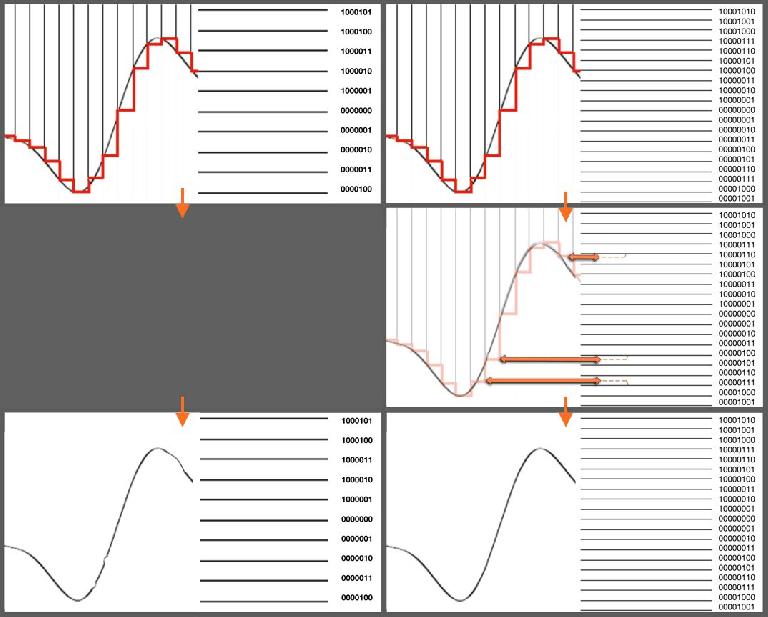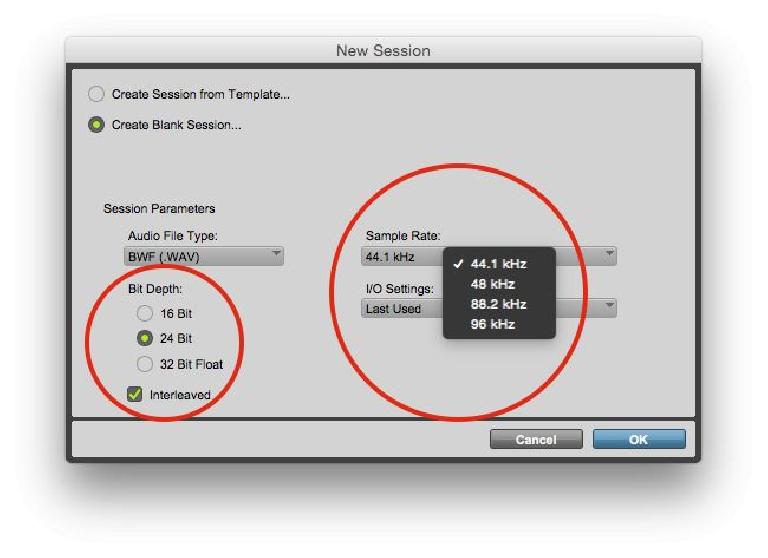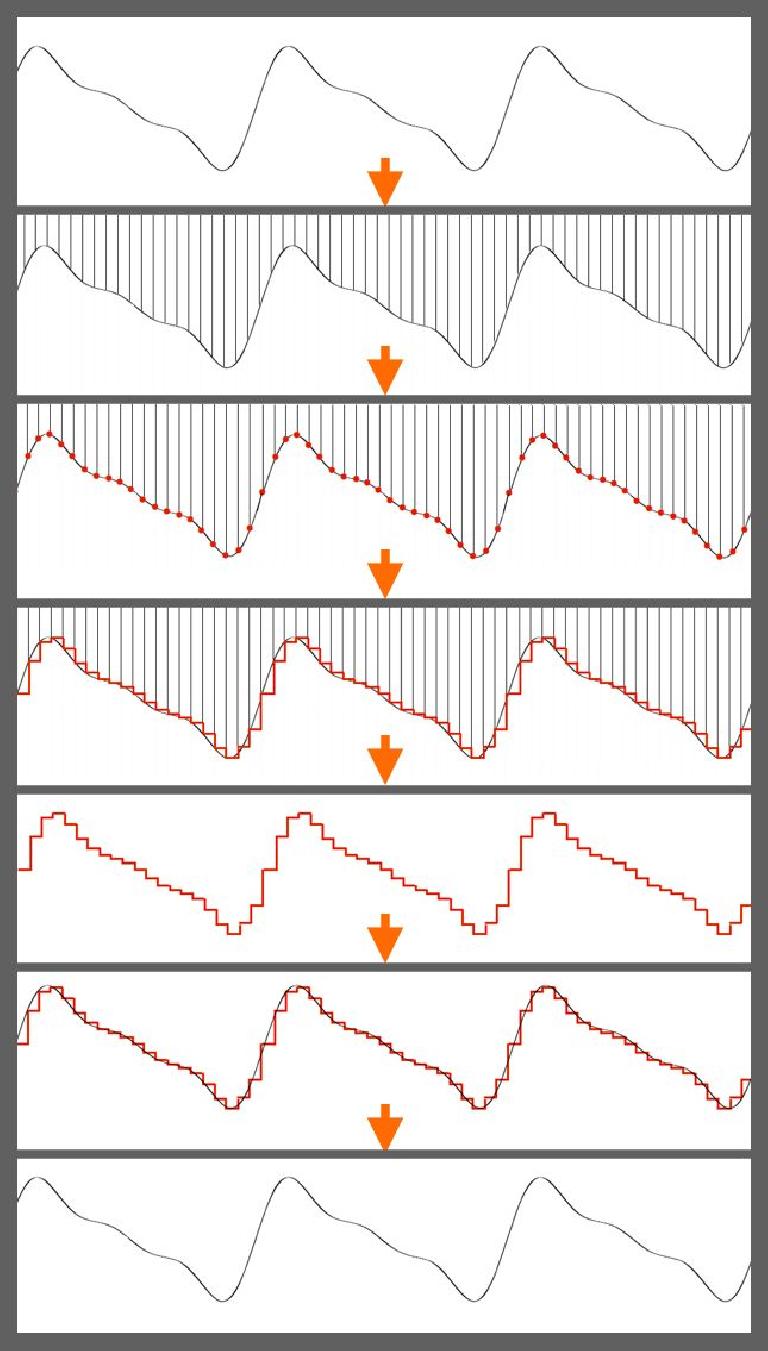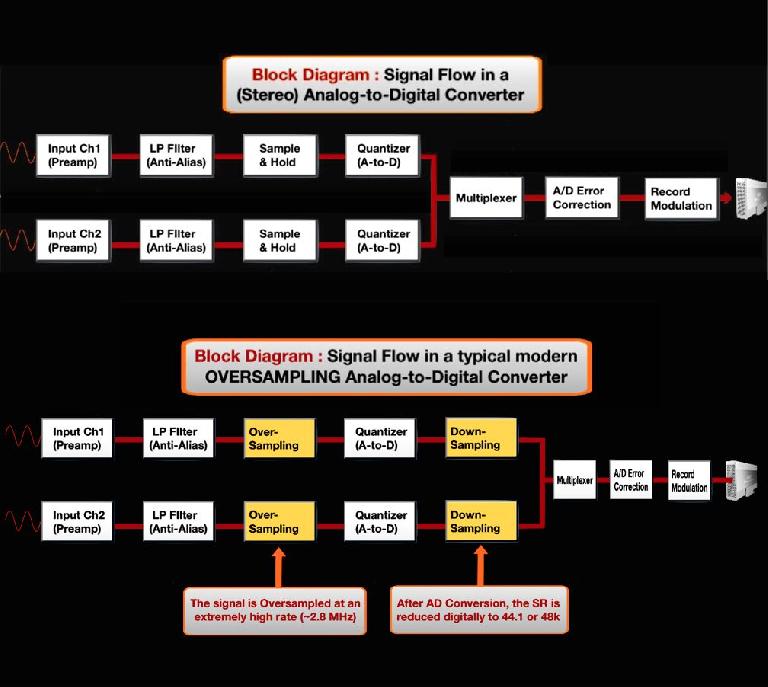डिजिटल ऑडियो संकल्प के आसपास ऑडियो उद्योग केन्द्रों में अधिक विवादास्पद बहस में से एक। अभी भी सीडी गुणवत्ता काफी अच्छी है, या सभी डिजिटल ध्वनि अब उपलब्ध हैं कि उच्च-रिस के विकल्प का पालन करना चाहिए? ठीक है, बिगाड़ने चेतावनी
The (Very Simplified) Basics
डिजिटल ऑडियो गुणवत्ता के दो बेंचमार्क नमूना दर और बिट संकल्प हैं। लोअर नमूना दर
सालों के लिए, उन दो बेंचमार्क मानकीकृत किया गया। सीडी
Please Sir, May I Have Some More..
लेकिन मूल मानक (एस) (कम से कम perceptually) सैद्धांतिक आवश्यकताओं, उच्च संकल्प के लिए क्यों कॉल मिले थे तो क्या होगा? यह वर्तमान में उपलब्ध उच्च बिट संकल्पों का उपयोग करने के लिए वास्तव में आवश्यक है
A Bit of This, a Bit of That
सबसे पहले, आसान हिस्सा
आप उम्मीद कर सकते हैं लेकिन, जैसा अंतर के रूप में महान नहीं है
और फिर भी, हर कोई (कम से कम सभी पेशेवरों) रिकॉर्ड 24 बिट! क्यों? खैर, मैं इस सवाल का जवाब क्यों नहीं लगता है? 24-बिट संकल्प नहीं करता
लेकिन सभी चर्चा के बारे में के बारे में क्या
Sample This
यह नमूना उच्च उपलब्ध दरें (88.2k, 96k, 176.4k, 192k) करने के लिए आता है, वहाँ
डिजिटल ऑडियो सिद्धांत वास्तव में काफी सुंदर है
लेकिन एक श्रव्य विरूपण साक्ष्य के बिना यह काम करने के लिए
आधुनिक डिजिटल कन्वर्टर्स, साल के लिए अब, वास्तव में लंबे समय उन परेशानी brickwall फिल्टर की आवश्यकता को समाप्त के बाद से, एक बहुत अधिक दरों पर नमूना है। उच्च ऑडियो आवृत्तियों जांचा लेकिन क्योंकि जिसके परिणामस्वरूप डिजिटल ऑडियो फ़ाइल का नमूना दर अभी भी, 44.1k या 48k हो सकता है
लेकिन अगर आप एक 96k रिकॉर्डिंग करते हैं, आप
The Ultrasonic Conundrum
खैर, यह उन क्षेत्रों में जहां अच्छे लोगों में से एक है
Golden Ears..?
टेस्ट माप सकते हैं
Wrap-Up
अंत में, लोगों को वे महसूस उपयुक्त हैं जो कुछ प्रस्तावों का उपयोग करने के लिए जारी रहेगा। बहुत ज्यादा हालांकि सभी समर्थक स्तर परियोजनाओं नमूना अधिक परंपरागत 44.1k से सीमा चुना दरें और 96k के लिए 48k, और 24-बिट कर रहे हैं कभी कभी भी 192k (कुछ अच्छी तरह का सम्मान इंजीनियरों 192k कुछ से अधिक प्रचार है कि लग रहा है, हालांकि)।
कभी कभी पसंद आप के लिए किया जाता है






 © 2024 Ask.Audio
A NonLinear Educating Company
© 2024 Ask.Audio
A NonLinear Educating Company
Discussion
I have actually only done the first part with most of my (soft) synths and have been surprised how well it sounds with synth sources at at 88..2 in a 44.1 project.
You're right, software instruments are one application where oversampling can potentially make a more noticeable difference—especially with creative applications that involve more extreme sample manipulation, which can sometimes clearly benefit from higher sampling rates. I didn't get into that for two reasons—the article was intended to be focused on playback/distribution more than processing, and it was already long and technical enough (especially before I edited it down!).. ;-)
As I've always understand it, most plug-ins that oversample (for maximum clarity with certain kinds of intensive processing, like some modeling emulations) will be fine doing that internally (if you enable it), regardless of the session settings..
I also didn't get into the whole issue of people listening to all those pristine hi-res audio productions as MP3s/MP4s, but I guess that's an issue for another day.. ;-)
Cheers,
Joe
Want to join the discussion?
Create an account or login to get started!